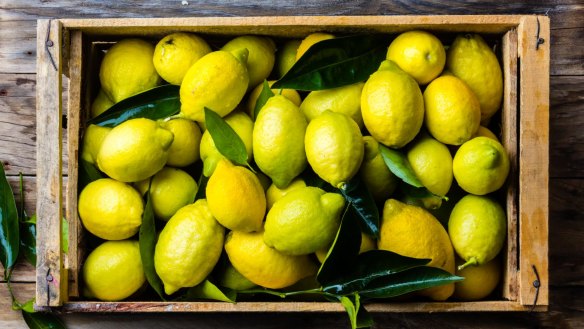How do you remove wax from a lemon?

How do I remove wax from a lemon? Y. McKinnon
When I was growing up in the country, I used to work for two old spinsters who lived on a farm on a hill. They had peacocks for pets, cats to keep down the rats and a root cellar in which they stored their potatoes over winter. We young farmhands would pick blemish-free apples in the orchard and rub them with paraffin wax. The wax protected the fruit from insect and fungal attack and also stopped the fruit from losing moisture. Not much has changed. If you see very shiny citrus in the supermarket, it has probably been treated with wax. Most food-grade wax is made with carnauba wax. This is sourced from the leaves of a South American palm tree. It is non-toxic and apparently edible. In Australia, however, we still use, to a lesser extent, wax made from shellac. This is a resin secreted by insects, which sadly renders the fruit unsuitable for vegans. Wax made from shellac can also contain morpholine, a compound banned in the EU for use in food. To remove wax, place small amounts of citrus in a colander and pour over freshly boiled water. Scrub with a nail brush. Some middle-class families have a brush dedicated to cleaning vegetables. If you have one, use it on your waxed fruit.
What's the difference between a navel and a Valencia orange? L. Parsons
The navel has a "belly button", hence navel, and is in season right now. Valencia oranges are in season in summer. They reabsorb chlorophyll into their skin as they ripen, so a summer Valencia will be green when fully ripe.
We were in Italy recently and were served a dish of what looked like prosciutto and broad beans. P. Tan
That was probably fave, lonza e pecorino. And you are lucky. The Italians have as many uses for fava (broad) beans as we have slang for getting drunk. They serve the very first of the tender, new-season beans with prawns, garlic and spaghettini. In Sicily, dried fava beans are cooked with fennel and onions to make a thick green stew called maccu. If you see it on a menu – order it. In Le Marche in Italy, I have had young broad beans, in the pod, served with cured pork loin, known there as lonza, and slices of pecorino. The flavours work brilliantly together. Modern chefs are steaming and cooling the beans and serving them with grated pecorino, olive oil and pepper. It is a winning combination. With new-season broad beans just about to hit the shelves, keep it in mind.
Send your vexing culinary conundrums to brainfood@richardcornish.com.au or tweet or insta @foodcornish.
- More:
- Food
- Brain food
